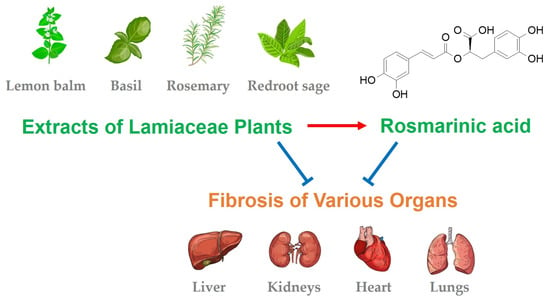Therapeutic Potential and Mechanisms of Rosmarinic Acid and the Extracts of Lamiaceae Plants for the Treatment of Fibrosis of Various Organs
Abstract
Share and Cite
Boo, Y.C. Therapeutic Potential and Mechanisms of Rosmarinic Acid and the Extracts of Lamiaceae Plants for the Treatment of Fibrosis of Various Organs. Antioxidants 2024, 13, 146. https://doi.org/10.3390/antiox13020146
Boo YC. Therapeutic Potential and Mechanisms of Rosmarinic Acid and the Extracts of Lamiaceae Plants for the Treatment of Fibrosis of Various Organs. Antioxidants. 2024; 13(2):146. https://doi.org/10.3390/antiox13020146
Chicago/Turabian StyleBoo, Yong Chool. 2024. "Therapeutic Potential and Mechanisms of Rosmarinic Acid and the Extracts of Lamiaceae Plants for the Treatment of Fibrosis of Various Organs" Antioxidants 13, no. 2: 146. https://doi.org/10.3390/antiox13020146
APA StyleBoo, Y. C. (2024). Therapeutic Potential and Mechanisms of Rosmarinic Acid and the Extracts of Lamiaceae Plants for the Treatment of Fibrosis of Various Organs. Antioxidants, 13(2), 146. https://doi.org/10.3390/antiox13020146







